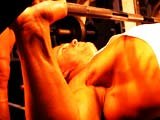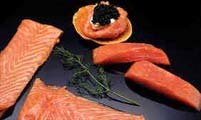This being the cornerstone of our goals every summer, it would be useful to have all the important and effective fat loss points complete with scientific rationale summed up in one short and sweet article.
1. Cut the calories

The only reason that a person could possibly gain weight is by eating more calories than their body uses. To reverse this trend, one must either eat fewer calories, increase the calories used by the body through exercise, or a combination of both. The easiest and healthiest way to accomplish a reduced caloric intake is to cut fat out of the diet. Fat is by far the most caloric dense nutrient.
A little less fat in the diet cuts total caloric consumption considerably. The second best way to reduce calories consumed is to eat smaller portions of food. For best results, use a combination of smaller portions and reduced fat foods. There are 3500 calories stored in a pound of fat. In order to lose a pound of fat, one must eat 3500 fewer calories than their body uses.
2. Train with weights

 Weight training incorporating the major muscle groups tends to burn more calories than aerobic exercise when done for equal periods of time. Not only does weight training burn a large number of calories in the gym, but the increased muscle tone and hypertrophy (size) that results from training of this type raises the basil metabolic rate considerably.
Weight training incorporating the major muscle groups tends to burn more calories than aerobic exercise when done for equal periods of time. Not only does weight training burn a large number of calories in the gym, but the increased muscle tone and hypertrophy (size) that results from training of this type raises the basil metabolic rate considerably.
This results in a higher metabolism at all times of the day, including during sleep. Aerobic training stimulates muscle tone and hypertrophy, but not to the same extent as weight training.
When on a caloric restricting diet, weight training appears to maintain lean body weight (and thus metabolic rate) more effectively than aerobic exercise. (1,4) This can prevent the yo-yo dieting effect seen so often with diets without exercise, but especially in diets without weight training.
3. Incorporate easy aerobic exercise

Aerobic exercise, although probably not as crucial as weight training for fat loss, still plays a very critical role. After all, aerobic exercise is fueled much more by free fatty acids (which come from your body fat stores) than is carbohydrate-fueled weight training. Aerobic exercise burns a large number of calories, but probably still fewer than weight training. In addition, aerobic training stimulates an increase in the number of fat burning mitochondria contained in the muscle cells.
This will increase the body's ability to use fat for all types of activities, including sleep. The only down side is that aerobic training does not raise the basil metabolic rate as effectively as training with weights. To obtain the greatest number of calories burned from your body fat stores instead of carbohydrates during aerobic exercise, exercise at low intensities and for longer periods of time. Lower intensities use the fat burning, aerobic, slow twitch muscle fibers for force production to a high degree. As intensity increases, and oxygen becomes increasingly in demand by the working muscles, greater numbers of anaerobic, carbohydrate burning type 2b muscle fibers are recruited because these fibers do not need near as much oxygen to generate energy.
In addition, the longer a session of cardiovascular exercise, the more fat will be used for fuel as body glycogen and blood glucose become depleted. This is why longer duration and lower intensity aerobic exercise burns more fat than short, high intensity exercise. (3) So what is considered low intensity? It depends largely on the physical condition of the client. For your average formerly sedentary person, 60 to 70% of maximum heart rate is a good, safe, fat-burning range.
4. Eat quality protein and carbohydrates

Now that your client is eating fewer fat calories (hopefully), there is more room in the diet for calories coming from protein and carbohydrates. In addition, there is an increased metabolic demand for protein and carbohydrates associated with physical activity. Consuming enough protein will ensure that the maximum amount of metabolic enhancing muscle mass is gained or at least maintained (depending on the case), during a fat loss program.
 Consuming enough carbohydrates will ensure enough muscle glycogen for energy to fuel effective workouts and prevent the excessive breakdown of muscle protein to be used for energy, which occurs in the absence of sufficient levels of body carbohydrates. Always eat complex carbohydrates, preferably from foods that are high in fiber content.
Consuming enough carbohydrates will ensure enough muscle glycogen for energy to fuel effective workouts and prevent the excessive breakdown of muscle protein to be used for energy, which occurs in the absence of sufficient levels of body carbohydrates. Always eat complex carbohydrates, preferably from foods that are high in fiber content.
Avoid simple sugars. Eat protein from many different sources in small portions throughout the day. A quality whey protein supplement is highly recommended because of its high biological value and generous supply of the branch chain amino acids needed for energy. (2) Try to balance every meal for protein, fat, and carbohydrates.
5. Don't try to lose the weight too quickly

Remember that weight loss from body fat, and not lean body mass or body water is the goal for improved energy levels, physical appearance, a stable metabolic rate and improved health-related factors such as blood pressure and cholesterol profile. Losing weight faster then 1 to 2 pounds a week will greatly increase the amount of weight lost from lean tissue and body water, and decrease pounds lost from fat.
Remembering that there are 3500 calories in a pound of fat that would equate to 500 to 1000 fewer calories the individual would need to consume than they use for fuel each day. Caloric restrictions any greater than this could deplete muscle and liver glycogen stores. This would cause a reduction in the ability of the body to retain water, and a large volume of weight lost through excessive urination. In addition, without glycogen for energy the body will rely much more on the amino acid pool (protein) to fuel metabolism. (2) This will eat away at valuable muscle mass and slow the metabolic rate.
It might be a good idea to print this out and share it with your client's so they can follow your training rationale. Feel free to contact me with comments or questions at parsons@issaonline.com. Good luck with your training in this prosperous new year!
A Step-By-Step Plan For Bodyfat Reduction! :: 4 Tips For Fast Fat Loss!
References
1) Ballor, D.L., V.L. Katch, M.D. Beque, and C.R. Marks. Resistance weight training during caloric restriction enhances lean body weight maintenance. Am. J. Clin. Nutr. 47:19-25. 1988.
2) Gastelu, D. Hatfield, F. Dynamic nutrition for maximum performance. Garden City Park, NY: Avery Publishing Group. 1997.
3) Howley, E.T. Franks, D.B. Health fitness instructors handbook. Champaign, IL: Human Kinetics. 1997.
4) National Strength and Conditioning Association. Essentials of Strength Training and Conditioning. Champaign, IL: Human Kinetics. 1994.
Thanks,
